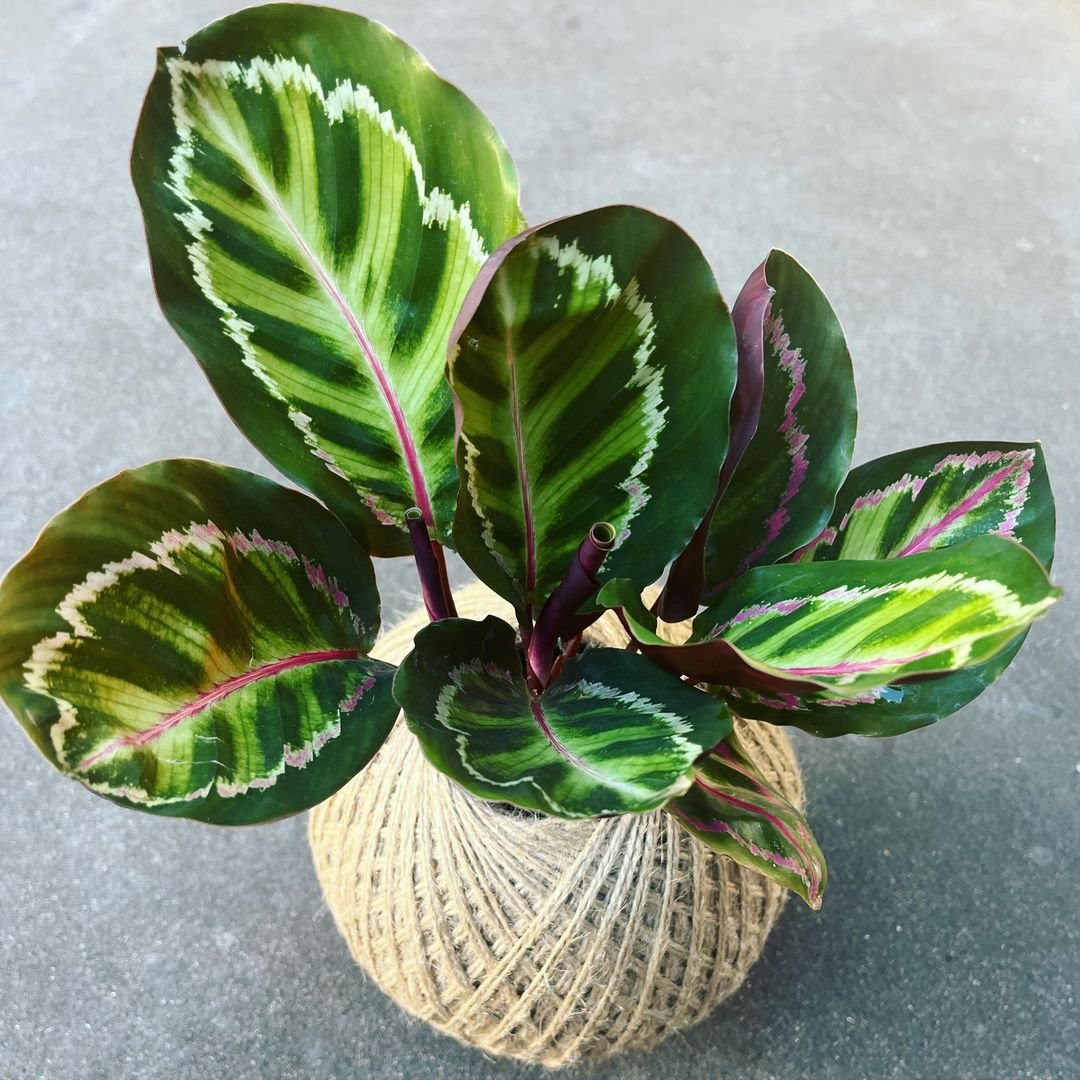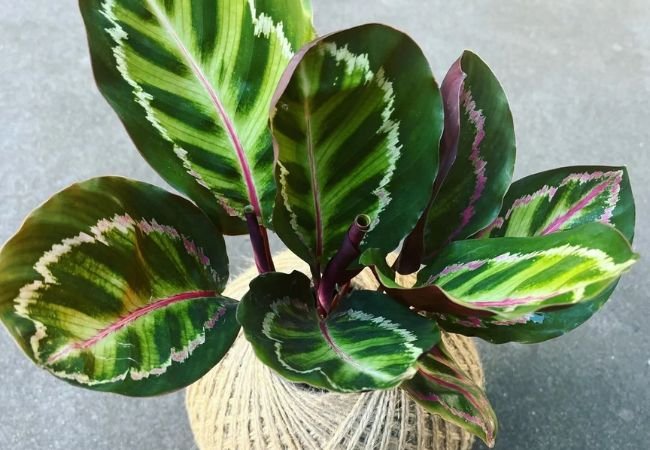Discover everything you need to know about Calathea Roseopicta care. Learn essential tips on watering, lighting, soil and more to keep your plant healthy and thriving.
Are you looking for a plant that’s both beautiful and interesting? Let me tell you about the Calathea Roseopicta! This stunning plant, also known as the Rose Painted Calathea, is a real eye-catcher. In this guide, we’ll cover everything you need to know about caring for this lovely plant.
Here’s an information chart for Calathea roseopicta:
| Attribute | Details |
|---|---|
| Botanical Name | Calathea roseopicta |
| Common Name | Rose-Painted Calathea |
| Plant Family | Marantaceae |
| Hardiness Zone | USDA zones 10-11 |
| Sun Exposure | Indirect light, partial shade |
| Soil Type | Well-drained, peaty, and loamy soil |
| Watering | Moderate to high; keep soil consistently moist but not waterlogged |
| Growth Habit | Upright, clumping perennial |
| Height/Spread | 1-2 feet tall / 1-2 feet wide |
| Special Features | Attractive foliage with colorful patterns, suitable for indoor growing, purifies air |
What is Calathea Roseopicta?

Calathea Roseopicta is a type of plant that comes from the rainforests of Brazil. It’s part of the Marantaceae family, which includes prayer plants. The Roseopicta gets its name from its beautiful leaves. They look like they’ve been painted with shades of green, pink, and white. According to the Missouri Botanical Garden, these plants are native to tropical Americas.
These plants are loved for their colorful foliage. The tops of the leaves are dark green with light green or pink patterns. The undersides are a pretty purple color. At night, the leaves fold up, which is why they’re sometimes called prayer plants.
Why Choose Calathea Roseopicta?
There are many reasons to add a Calathea Roseopicta to your plant collection:
- Beautiful leaves: The patterns on the leaves are stunning and unique.
- Air-purifying: Like many houseplants, they help clean the air in your home.
- Pet-friendly: They’re non-toxic to cats and dogs, as confirmed by the ASPCA.
- Interesting movement: The leaves move up and down throughout the day.
Caring for Your Calathea Roseopicta
Now, let’s dive into how to keep your Calathea Roseopicta happy and healthy.
Light Requirements
Calathea Roseopicta likes bright, indirect light. In nature, these plants grow on the forest floor, so they’re used to dappled sunlight. Too much direct sun can fade the leaf colors and even burn the leaves. The University of Florida suggests that these plants can tolerate low light conditions, but they grow best in bright, indirect light.
A spot near a window with a sheer curtain is perfect. If you don’t have a bright spot, don’t worry. These plants can tolerate lower light, but they might grow more slowly.
Watering Needs
When it comes to water, Calathea Roseopicta likes to stay evenly moist. But be careful – they don’t like to sit in water. Water your plant when the top inch of soil feels dry. Use room temperature water, as cold water can shock the roots.
These plants are sensitive to chemicals in tap water. If possible, use rainwater or distilled water. If you must use tap water, let it sit out overnight before using it. The Penn State Extension recommends using distilled water or rainwater to avoid leaf browning.
Soil and Potting
Use a well-draining potting mix for your Calathea Roseopicta. A mix made for African violets works well. You can also make your own mix with:
- 1 part potting soil
- 1 part perlite
- 1 part peat moss
Make sure your pot has drainage holes. These plants don’t like wet feet!
Humidity and Temperature
Calathea Roseopicta loves high humidity. They come from tropical rainforests, after all! Aim for humidity levels of 60% or higher. You can increase humidity by:
- Misting the leaves daily
- Using a pebble tray filled with water
- Placing a humidifier nearby
These plants prefer warm temperatures between 65°F and 80°F (18°C to 27°C). Keep them away from cold drafts and air conditioning vents. The Royal Horticultural Society suggests maintaining a minimum temperature of 60°F (15°C) for optimal growth.
Fertilizing Your Calathea Roseopicta
Feed your plant with a balanced, water-soluble fertilizer every 4-6 weeks during the growing season (spring and summer). In fall and winter, you can stop fertilizing. Always dilute the fertilizer to half strength to avoid burning the roots. The Clemson Cooperative Extension provides useful tips on fertilizing indoor plants.
Pruning and Maintenance
Calathea Roseopicta doesn’t need much pruning. You can remove any yellow or brown leaves to keep the plant looking its best. Use clean, sharp scissors to make clean cuts.
Wipe the leaves gently with a damp cloth every few weeks. This keeps them clean and helps you spot any pest problems early.
Repotting Your Calathea Roseopicta
Repot your plant every 1-2 years, or when it outgrows its current pot. Choose a pot that’s 1-2 inches larger in diameter. The best time to repot is in spring, at the start of the growing season.
Be gentle when repotting. Calathea Roseopicta has delicate roots. Water the plant well after repotting and keep it in a shady spot for a few days to recover.
Common Problems and Solutions
Even with the best care, your Calathea Roseopicta might face some issues. Here are some common problems and how to solve them:
- Crispy leaf edges: This usually means low humidity. Increase humidity around the plant.
- Yellow leaves: Often caused by overwatering. Let the soil dry out more between waterings.
- Fading leaf colors: Too much direct sunlight. Move the plant to a shadier spot.
- Curling leaves: Can be due to underwatering or low humidity. Water more frequently and increase humidity.
- Pests: Watch out for spider mites, mealybugs, and scale insects. Treat with insecticidal soap or neem oil.
For more information on common houseplant pests and diseases, check out this guide from the University of Maryland Extension.
Propagating Calathea Roseopicta
Want more Calathea Roseopicta plants? You can propagate them by division. Here’s how:
- Remove the plant from its pot.
- Gently separate the roots into sections, each with several leaves.
- Plant each section in its own pot with fresh potting mix.
- Water well and keep in a warm, humid place until new growth appears.
Spring is the best time to divide your plant, as it’s starting its active growth period.
Calathea Roseopicta Varieties
There are several varieties of Calathea Roseopicta. Each has its own unique leaf patterns:
- Dottie: Dark leaves with pink edges
- Medallion: Green leaves with silver patterns
- Corona: Green leaves with a white border
- Rosy: Pink leaves with dark green edges
Each variety has slightly different care needs, so check the specific requirements for your plant.
Calathea Roseopicta is a beautiful, interesting plant that can add a touch of tropical flair to your home. With the right care, it will reward you with stunning foliage and fascinating movement.
Remember the key points:
- Bright, indirect light
- High humidity
- Consistently moist (but not wet) soil
- Warm temperatures
- Regular cleaning and occasional pruning
With these tips, your Calathea Roseopicta will thrive. Happy growing!
For more information on tropical houseplants, check out the North Carolina State Extension for additional care tips and plant information.








Leave a Reply